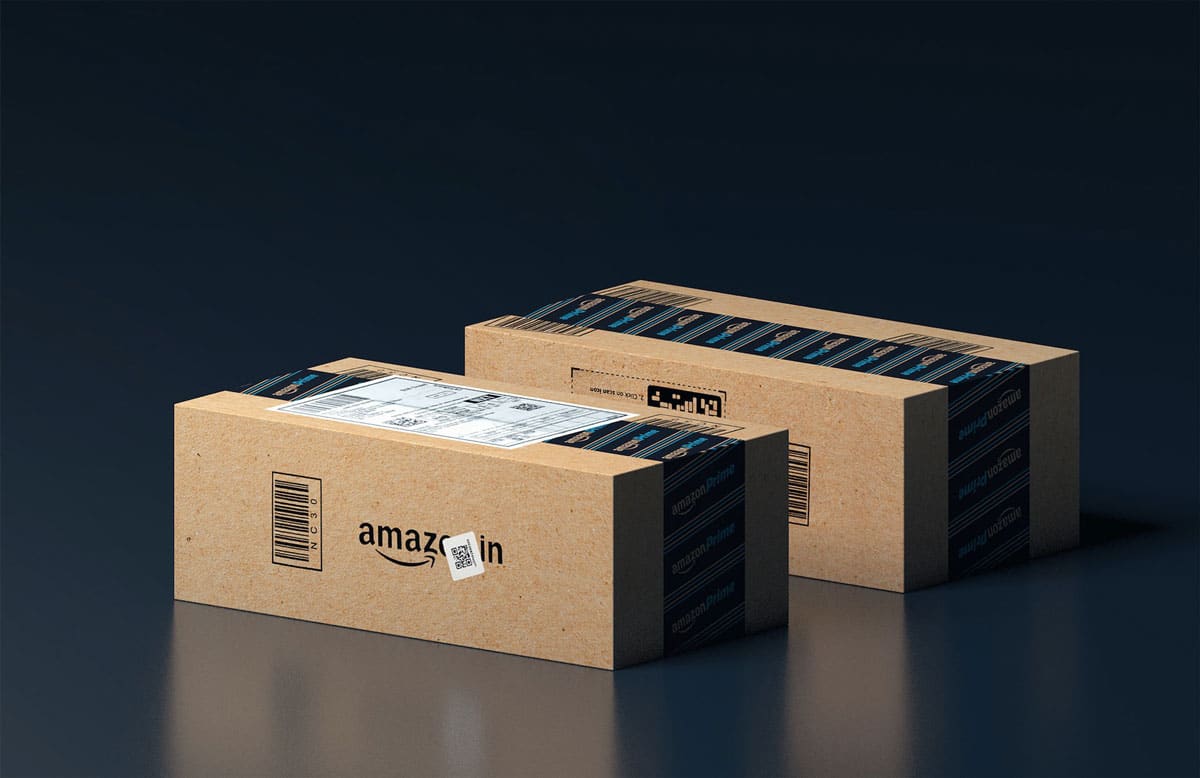

When it comes to assessing the shopper journey, customer sentiment is a valuable KPI that measures consumers’ experiences with a brand throughout every touchpoint in their journey. While it may sound like just another feedback metric, the unique advantages of the KPI make it worth considering. As it gains popularity, here are some of the aspects you should know.
Traditional market research methods such as NPS are less effective in capturing nuances in the customer’s response. This metric uses a single survey question that only represents a positive and negative binary. Conversely, consumer sentiment models can express more detailed customer feedback, providing brands with actionable data.
For CPG (consumer packaged goods) brands, customer sentiment is particularly valuable. The high turnover rate of the products allows for quick adaptations and opinion changes. Customers often have more options and an easier time switching between brands. Since these products are often necessities rather than luxuries, it’s crucial to understand the consumer’s voice.
When analyzing customer sentiment, it’s important to have the right questions in mind. After all, the data isn’t beneficial unless it answers pertinent questions. For instance, brands should measure performance rates, understand the impact of customer sentiment on business processes, and assess influential market trends.
Since customer sentiment is a nuanced measurement, it’s easy for brands to misunderstand the data.
One example of this is failing to identify analytical criteria. Gautam Kanumuru talks about the practices of Yogi’s best clients, saying, “they always, always have a benchmark, whether it's certain competitors, or the market. But taking things in context is extremely important.” Without knowing what is expected of your field or what is actually relevant to your product’s success, brands can be too quick to make misguided decisions.
Another key mistake is drawing from only one source. Using small focus groups or specific demographics can fail to explain the bigger picture. Customers are varied and unpredictable, so the best customer sentiment data comes from an array of sources on a consistent basis. This way, your practices are up-to-date and more inclusive of your entire audience.
Any implementation of customer sentiment services will always come down to the executive team. This means that all analytics need to support the highest goals of the business. Haithem Elembaby says that “you can take a look at your to-do list or take a look at your KPIs for that quarter or that year and figure out if this new solution can connect to something that you’re already working on.” Implementing customer sentiment into your business processes streamlines the buy-in process.
Most brands recognize the value of customer sentiment services, but it can be much harder to promote the concept to cautious budget-holders. Aside from investments, it’s beneficial to make long-term connections with the vendors themselves. This leads to better utilization of the service and access to knowledgeable people who can answer difficult questions.
Lastly, Haithem encourages companies to push for what they believe in. Hundreds of brands have seen tangible improvements by acting on customer sentiment insights that were previously unattainable. Focusing on the small wins early on can be enough to demonstrate the value. He says, “They don't even have to...blow the socks off the organization and create millions of dollars of revenue, but you want to almost guarantee that they will actually happen, right? Because…data is great, but…it's nothing if you can't do anything with it.”
The actions informed by customer sentiment data are what ultimately separates successful companies from the rest.

As healthcare grows less centralized, providers and clinicians must reconsider how to treat patients from afar. There is still a great demand for in-person treatment, but remote care has soared in popularity since the pandemic. The convenience, accessibility, and often affordability of these services make them a great option for many.
At the forefront of this new wave are AI and machine learning, hand-in-hand innovations that are changing the face of healthcare. However, they can be complex topics, so it helps to know the basics.
Before 2020, healthcare was primarily delegated to the provider. Outside of some telehealth and remote options, receiving care meant going to a physical location. Additionally, the treatment could sometimes be homogenized to handle the demand.
In contrast, AI healthcare seeks to use pre-existing data to inform and adapt to patients’ needs. This coincides with a greater movement of focusing on patients first by listening to their expectations and concerns from the very start. While many other industries have adopted this approach, healthcare is only beginning to make this shift. Thomas Swanson of Adobe’s Health and Life Sciences team says, “As consumers in all other industries, we have built expectations as to what digital experiences look and feel like… And what degrees of personalization we expect as a result of that data.”
The digital experience for patients is paramount to the future success of AI healthcare. It is an opportunity for personalization, but it’s also the greatest barrier to adoption among patients. Al Zinkand of Baylor Scott & White Health observes that “our doctors have trust, the systems often do not.” The unique intersection of commerce and health means providers need to improve both aspects simultaneously. As Al notes, this requires “meeting [consumers] in their emotional state through technology.” If executed well, machine learning can be a permanent and effective alternative to physical office spaces.
AI can also adapt to another change in the healthcare landscape: personal care management. Many patients are resisting the current model of treatment where care is only given when required. Instead, people are looking to manage and improve their health consistently. AI and machine learning can cater to this desire by being far more accessible than the average doctor. They can also utilize greater data sets to make accurate recommendations, refer resources, and accommodate requests quickly.
Tom Hileman of Hileman Group sees the potential of AI to meet the wants of the emerging generation, saying, “they want convenience; they want price transparency; they want to be able to schedule an appointment and take care of their health…And I think that’s what we have to think about in healthcare marketing is ‘where do we create value in their minds and how do we apply it?’” All of this is much easier when it does not require the constant attention of busy doctors and professionals.
Many consumers are wary of AI healthcare options because of previous experiences with chatbots. These tools had value but were lacking in many areas. Not only were they inflexible, but they often failed to provide meaningful solutions to struggling patients. While AI solutions will never replace human care, they are a far improvement.
AI platforms today are rooted in deep datasets, growing more refined every day. They are built on knowledge from doctors and medical professionals to give genuine insight into the patient’s condition. According to Chris Hemphill of Woebot Health, his company conducted a study into the relationships between AI and patients and “found that people were forming similar human life bonds with the AI that they’re talking to within two to three days.” This model can also avoid some of the biases found in humans, focusing on holistic health from multiple sources from an objective perspective.
The future of healthcare can be daunting, but there are also many developments to consider. AI and machine learning are quickly growing to meet patients’ needs, finding modern solutions in a post-pandemic world. While there is a lot of work left to be done, it’s a promising start for burgeoning healthcare technology.

Diversity and inclusion (D&I) are crucial factors that determine how a business operates, who it hires, and its promotion of equitable opportunities.
However, many employees feel that their company’s D&I initiatives don’t cut it. In a Harvard Business Review study, 78% of respondents said that their company lacked 2-D (two-dimensional) diversity in leadership, which could cost companies significantly. Research shows that diverse, inclusive companies yield greater results and drive market growth better than companies lacking in these areas.
Building out your D&I objectives not only helps your business flourish but also allows you to attract top talent, establish an inclusive culture, and offer initiatives that align with employees’ values. So, where do you start on your path to diversity and inclusion?
When solidifying your D&I initiatives, you have to think about diversity as a journey — not a gap. A gap means that your company is missing something, but a journey means that you’re taking steps to reach your D&I goals.
When you’re trying to get to a destination without a roadmap, you might take a turn and realize it wasn’t the right direction. The same goes for D&I campaigns. You have to be agile, intentional, and able to pivot when you realize you took a wrong turn. But it doesn’t mean you’re missing the mark — it’s just part of your ever-evolving D&I path.
What kinds of programs are companies implementing for success in the D&I field?
World Wide Technology (WWT) breaks its initiative down into three buckets: diversity in the workforce, business impact, and community outreach. Brian Sharpless, the Director of Diversity Business Development, describes their integrated management leadership program. “It's not just the normal D&I type of training,” he says. “We're talking about having empathy and different things for individuals… and it helps calibrate the level of D&I within the organization. And then we move over to our supplier diversity program and [drive] those business impacts. When we look at communities, a lot of [them] are made up of diverse-owned businesses, and how do we drive equity into those communities? By utilizing the companies that are from those communities that are going to employ individuals from those communities.”
Like WWT, Willis Towers Watson (WTW) has its own D&I goals, and Patricia Marinho is here to share the details. One of WTW’s initiatives is to hire more minorities. However, this is challenging in the LATAM region and can often take years to see through. “[Minorities] don’t have the opportunity to be able to go to university and then apply for certain positions,” Patricia says. “So what we as a company have to do now [is] hire those minorities when they’re still in high school…and start to prepare them for, in 10 years, to be able to get positions that we’re looking for.” These high schoolers are trained by company members so that they can land a job in the future — even without a college degree.
If you want your D&I initiatives to succeed, the entire company has to align with these goals and embody your culture. From new hires to senior executives, each person must be intentional about fulfilling D&I initiatives.
One of WTW’s goals is to include more women in their senior management roles. But instead of making decisions at the executive level, the company welcomes feedback from all employees. In addition to seminars and coaching, WTW sends a questionnaire to the entire company with different questions regarding inclusion and diversity. Employees can share their thoughts on the initiatives and ideas for next steps. It’s not just the senior manager that makes the decisions — each team member has a voice and is part of the company’s plan of action.
According to the WWT team, accountability and culture are vital to getting everyone on board. Executives at the top are held accountable for their efforts in D&I, and it disperses throughout the company. Additionally, all hires are part of the company's fabric and, therefore, contribute to D&I initiatives. When all members are hired with the company culture and D&I objectives in mind, you can build a thriving organization.

Global shutdowns and fluctuations in consumer purchasing habits have caused disturbances in the supply chain ranging from material, inventory, and labor shortages to port blockages and industry backlogs.
These disruptions have impacted consumer experiences and loyalties significantly. So, how can you solve challenges in the supply chain to enhance the customer journey and meet specific expectations?
Given that uncertainty in the supply chain is an ongoing issue unlikely to resolve soon, brands must respond to the instabilities strategically to ensure operational reliability. This requires developing a resilience strategy to identify and address functional gaps in your supply chain.
For example, when mapping out your multi-layered operations, you may discover setbacks from your product suppliers or discrepancies in your production line. By collaborating with external suppliers and stakeholders, you can gain insights and share crucial feedback to build solutions and facilitate effective processes.
Once you’ve developed a sound operational strategy, you need to invest in digital technology to test and execute resiliency. According to Gautham Acharya, Strategy and Portfolio Planning Leader at IBM, “investing in digital technologies helps you get a better view of your supply chain…and predict shortages in certain areas and overcapacity in other areas.”
Artificial intelligence simplifies your supply chain operations and consolidates multiple systems to maximize visibility. Additionally, automating your supply chain optimizes effective decision-making on forecasting and allows you to create simulations of key supply chain issues to evaluate resiliency.
With inventory shortages and more brands entering the market, customers have switched to competing merchants with available products that provide quality service and speedy delivery. For this reason, brands should communicate product availability and ensure delivery times.
So, what can you do to retain customers and improve experiences?
Each of the aforementioned supply chain strategies must be optimized to fulfill consumer expectations. This involves interacting with customers at every touchpoint to collect data and feedback to establish a customer-focused culture. With a customized experience focused on accomplishing individual goals, Stephan Bieber, Group Product Manager at Adobe, says you can achieve “higher customer satisfaction rates, reduce churn, and increase retention rates.”

As the new year approaches, website traffic declines, so customer acquisition is a top priority for brands. One way to optimize your acquisition spending is to invest in loyalty programs and strategies. Yet, some brands often notice that customers don’t return for a second purchase after signing up for a loyalty program. Additionally, when it comes to brand loyalty in general, consumers will switch brands willingly due to factors such as product pricing and availability.
So, how can you augment and expand loyalties to retain new and existing customers in the coming year?
Customers who utilize loyalty points and redeem earned rewards are more than twice as valuable as those who disregard them. But, according to Brad Macdonald, Vice President of Loyalty Strategy at Epsilon, an average of “28% of consumers are abandoning loyalty programs without ever redeeming any points.” Sometimes, that churn rate can be as high as 50%.
So, why are customers declining these seemingly favorable opportunities?
The reason is delayed gratification, which diminishes the value of a program. With standard loyalty programs, it takes an average of six months — sometimes as long as 16 months — for customers to earn an incentive. For this reason, providing consumers with instant and goal-oriented rewards is imperative to increase purchase rates.
With the accumulation of unredeemed points and rewards, brands must develop strategies to maximize program engagement. “70% [of customers] are more likely to recommend a brand if they have a good loyalty program,” states Michael Klein, Global Director of Industry Strategy and Marketing at Adobe.
When creating effective programs, it’s ideal to combine easily attainable rewards with long-term aspirational ones. This requires clearly communicating how the customer can benefit from each reward to enhance its value proposition and relevance.
Case in point, Kohl’s and Old Navy offer cash rewards that require customers to make a second purchase to redeem the reward. This gives consumers a goal to work toward while building loyalty and brand profitability.
While loyalty programs aim to increase ROI for your business, some companies feel these programs are too large of an investment and cannot obtain value from them.
So, what other actions can you take to expand customer retention efforts?
Customer personalization is a viable alternative for generating brand loyalty. This strategy creates meaningful moments customized for specific consumer purchasing habits and preferences. It’s best to communicate with customers during each touchpoint in their journey by following up with a personalized email campaign after every purchase or action.
“The whole purpose of loyalty,” says Ashley Lockridge, Vice President of Strategic Consulting at Epsilon, “is not necessarily to live over here in a silo…which, for many organizations, they have a loyalty program, and they kind of live in their own little world. The beauty of [customer personalization] is that you can combine the two so that with every touchpoint, you have the ability to speak to that person on a one-to-one level.”
No matter the loyalty efforts you leverage, it’s crucial to diversify, personalize, and optimize each strategy.

Amazon hosted their most recent unBoxed conference and discussed the newest products, updates, and insights to help brands refine their advertising strategy.
Don’t be troubled if you missed the conference — advertising experts are here to explain the most significant developments to help you utilize the most efficient tools for growing on Amazon in 2023 and beyond.
Many brands employ sponsored display ads in their advertising strategy. In their newest update, Amazon added four new features to sponsored display ads.
The first of these features impacts non-endemic sellers, who are now able to utilize sponsored display ads on the platform. In the past, insurance companies, finance companies, and other brands that don’t sell products directly on Amazon couldn’t utilize the Demand-Side Platform. Now, they can leverage sponsored display and pay-per-click ads.
The second major update is a new promotional strategy with the unofficial title of “Amazon rewards.” Previously, if you ran a coupon on Amazon, that coupon could be seen by everyone, and you couldn’t make a coupon exclusive to an ad type. However, with the new promotional strategy, you can offer credit or gift card coupons to Amazon customers if they purchase your product, and it will only show up for those customers who see your sponsored display ads. “This is pretty monumental,” Johnathon Braga explains, “In terms of the impact of a coupon tied with a promotional or advertising strategy on Amazon, this is going to be huge in really seeing the dual impact there.”
Another new feature relates to sponsored display video. With more ad placements filling up on Amazon product detail pages, it’s easy to get lost in the mix. But sponsored display video lets your brand separate itself from the page full of advertisements, effectively increasing engagement and conversion rates.
The fourth sponsored display ad development improves forecasting. It can be difficult to forecast if you don’t have external tools outside of the ad console. But with new and improved features, Amazon will give you a forecast pulled directly from the ad console and project how much you could spend on campaigns.
Amazon Marketing Stream, which delivers Amazon Ad campaign metrics, is better than ever. “You can get hourly insights [which] come directly from Amazon,” Scott Miller explains, “And you're getting faster notifications of this because you can get this at any point of the day. So you can almost have real-time optimization…[and] there's a push-based system, which just means that you can have this set up to run so that you can turn campaigns on and off, you can adjust the spend, depending on the time of day, where you can really make the best use of your budget.”
In addition to Amazon Marketing Stream improvements, Amazon Marketing Cloud (AMC) is making transformations. Amazon has created a dashboard to help brands understand attributions and measure advertising across the channel. The platform now allows brands to see the customers’ path to purchase. Improved planning, actionable insights, new audiences, and a better understanding of customer data are just some of the AMC benefits.
Demand-Side Platform (DSP) was another big storyline across the unBoxed conference. A series of additional updates will help brands optimize the Amazon programmatic platform. One of these updates is digital signage. With an increasing number of brick-and-mortar stores, brands can take advantage of Amazon’s in-store digital signs to display ads.
More updates that can help brands get in front of customers are granular targeting and new audience tools. Organizations on Amazon can now target custom audiences by creating exclusions to focus on customers who aren’t familiar with the brand, haven’t made a purchase, and other similar filters.
Previously, Amazon only had behavior targeting, where brands could see past purchase history and other kinds of behavior. But now, they’ve rolled out contextual targeting, which can target shoppers based on websites they’re using — not just shopping behaviors.
The best way to optimize these new tools is to partner with a company that knows the ins and outs of these updates. David Liggins II says, “These things can get really complex, and that's why you have teams that are specialized with their expertise and making this simple and building out these strategies for you. There's so much to pay attention to and to look at…it is literally a full-time job, just understanding what these tools can do for your business. But when you implement them in the right way, that's when you really start to leverage your growth.”

The weeks leading up to Black Friday and Cyber Monday are a make-or-break time for brands. Many are on a mission to turn carts into purchases and prospects into customers. With pressure looming over the biggest sale of the year, what can brands do to ensure they’re on track for success?
Even if you’re falling short of your projected goals, there’s one strategy that can help you get back on course: audience segmentation. In this marketing approach, brands break customer lists down into subgroups, leading to more tailored messaging and greater audience engagement.
Audience segmentation offers opportunities for brands to accelerate success quickly; however, there’s also room for mistakes — which can be costly if you don’t know how to work around them.
One of the largest mistakes brands make — especially with email campaigns — is falling into a habit. Some brands get comfortable with their metrics and stick to their routine because it gives them satisfactory results. With email, there’s a fairly high success rate for less effort compared to other sizable campaigns, and brands don’t realize that the ceiling could be much higher. When you optimize email campaigns, you can see improved results that could push your brand from satisfactory to outstanding.
Another mistake comes in the setup of email and SMS campaigns. Many brands take a “batch-and-blast” approach, meaning they send messages to their entire customer list. When you batch and blast, it diminishes the value of future messages you send to individual recipients. Additionally, sending batch and blast campaigns could cause messages to be flagged as spam — which is costly before the holiday season.
To avoid these major marketing mistakes, brands can utilize audience segmentation. By breaking down customers into smaller groups and identifying their needs, you can better target your messaging and create more engaging content for them.
Many fashion and apparel brands segment by locale to target specific customers. For example, consumers residing in areas with traditionally cold or wet weather during the holidays can be segmented and targeted with apparel for this type of weather.
During this time of year, holiday shopper segmentations are crucial. Some shoppers are only active in the market during the holiday season, namely Black Friday and Cyber Monday, so you want specific messaging to point them toward your brand.
A subset of the holiday shopper category is the discount shopper. Some luxury and premium brands aren’t big on the discount and sales category; however, even if it's not a big portion of what you do, having a discount shopper segment is helpful. Why? Because it allows you to promote and sell inventory at a discount without it becoming a big part of how your brand is perceived.
Another segment is the churn risk audience. This group consists of customers who bought a product from you once but are unlikely to buy that product from you again. When you’re not on the top of their search list, the churn risk segment can be helpful to develop specific content strategies and get them to reconnect, keeping you top of mind in the most meaningful way.
When you know your top segmentation categories, how do you place the right people into the right categories and take action?
One helpful tip is to look at consumer behavior and product interest. Who’s engaging but not purchasing? Which consumers are buying which products the most?
“Most of us have that purchase history,” Jordan Brannon, President of Coalition Technologies, explains. “We have the ability to go back into our orders and essentially see what people have bought, and we can then customize and target our emails and automations based on user interest in specific product types and certain brands.”
However, Jordan warns brands to be cautious about SMS. During the holiday season especially, it’s best to send fewer SMS campaigns. Despite this, when you carry segmentation data over to these campaigns, they’ll become much more effective — even if you’re sending fewer campaigns.
Consumers are much more open to multiple email campaigns, especially when they’re targeted correctly. When you customize and target emails based on purchase history and data, consumers will be much more willing to open and engage with the messages because they’re catered to specific consumer needs.

Financial service companies are always looking to develop their business. With new technologies and AI capabilities evolving yearly, many companies are finding better ways to analyze data, leverage large language models, and cater to the customer.
But what specific technologies and transformer capabilities can help your financial company grow?
Every year, thousands of AI papers are written. In the last year, 70% of these papers discuss transformers. Transformers are associated with natural language processing, chatbots, voice recognition, reinforcement learning, and much more.
Take BlenderBot, for example. This conversational AI was created by Facebook, and its model has been trained on more than 70,000 interactions. BlenderBot allows anyone to type in a question, receive information, and chat with the AI. But how can you utilize these transformer technologies in the financial services space?
These models, like BlenderBot, can be fine-tuned to fit the needs of your organization. Your company can have its own chatbot, summarize and create documents, analyze information, and predict future data using AI and transformers.
JP Morgan is one of the leaders in the financial services space using AI technology. Their investor report shows that next year, they’ll spend one billion dollars on AI while predicting two billion in return.
Currently, the company has 500 live AI projects, and they’re en route to doubling that number by 2024. Over the years, they’ve improved their cycle of generating AI by about 70%. So, how do they do it?
Initially, JP Morgan did all of their AI on-premise, then they moved to the cloud, and now, their strategy is to undertake a hybrid infrastructure. By strengthening its technology foundation and modernizing its applications, JP Morgan is on track to increase speed and resiliency and drive cost efficiency.
Your financial company might not be a JP Morgan-level business, but there are still tools and partners out there to help you thrive — even on a budget.
“Right now,” Justin Hodgson of NVIDIA explains, “there are enough really, really good transformers available that have already been designed…I think the problem for most customers is, it's too expensive to train them. Or it's too expensive to adopt that model and process it or fine-tune it with their data. And that's where we're trying to help. We've got open-source tools, [and] we've got some new technology coming imminently that's going to make it a lot more cost-effective to do that.”
Megatron is just one of many tools that can help financial service companies thrive. It’s a framework of software that allows you to scale large language models and train them while meeting your budget. This open-source technology, along with many other innovations, can help you scale in a cost-effective way. Additionally, if you want to pursue the technology but don’t know where to start, NVIDIA’s products and people can help you find cost-effective solutions specific to your needs.

With rapid advancements in consumer demands and eCommerce trends, businesses need to develop innovative and adaptable approaches to identify and solve use cases.
One effective solution companies can leverage to deploy digital transformation initiatives is composable commerce. This strategy enables organizations to select and integrate industry-leading technology into a custom application designed to optimize digital experiences.
So, what do you need to know about composable commerce, and how can you devise and implement a composable system to remain agile in today’s volatile digital landscape?
When selecting technology and software components to build composable architecture, it’s essential to outline your organization’s digital transformation journey. This requires formulating key business criteria to establish initial needs, deliver value, maximize ROI, and achieve your end goals.
Once you’ve determined a framework for your company’s transformational efforts, you can execute a phased integration approach that involves testing various components in increments to assess potential value, attain short-term ROI goals, and obtain crucial feedback, allowing you to refine and hone your strategy. As Michael Scholz says, by “starting with a holistic and comprehensive approach,” you can “start small and grow into a new platform.”
According to Jozef Stawarz, International Engineering Head at Alcon, companies must consider the constraints around platform integration. Composable commerce solutions involve multiple components, platforms, and technologies, so Jozef maintains that, unlike traditional systems where “you build an eCommerce system, pick a platform, and build within it,” companies need to “build around” their chosen platform to accommodate a multi-phased approach and complex systems.
Integrating designated technology and software into a comprehensive architecture requires modern approaches to enhance performance.
According to Brian Gilmore, Director of Digital Engagement at EPAM, MACH (microservices-based, API-first, cloud-native, and headless) enables businesses “to create a modern distributed architecture in the cloud that’s best-of-breed.” The infrastructure incorporates platforms and consolidates organizational capabilities seamlessly, allowing you to customize solutions to solve company requirements and individual use cases.
Additionally, each MACH platform is programmed to manage specific operational features, including product pricing and categories, order placement, user login and profile creation, and shopping cart optimization. MACH’s flexibility gives you the opportunity to exchange components, maximizing business adaptability and time-to-market.
A necessary requirement of composable commerce is enhancing customers’ shopping and purchase experiences. When optimizing composable systems for the consumer, Jake Athey, VP of Marketing and Sales at Acquia, notes that “ the eCommerce experience needs to be richer, more complete with that balance of objective and subjective information, and come across as a seamless, simple, and fast experience on any device.”
To accomplish this, Jake recommends adopting digital or hybrid shopping experiences and amplifying design and performance on digital platforms. When focusing on website design, it’s important to utilize clear visuals and comparison tools to emphasize product attributes. By combining design features with optimized performance, you can create a streamlined front-end user shopping experience.

In 2012, most people thought that physical retail was dead. In 2016, an Atlantic article talked about the retail apocalypse and emphasized the tragedy of store closings. Today, everyone is talking about the metaverse and our transition into the digital world.
But is digitalization really going to take over our brick-and-mortar stores?
Experts in the retail space say now, more than ever, retail is undergoing a renaissance and a dramatic transformation. Although we’ve already seen some significant digital shifts, in-person experiences are making a comeback — especially with the integration of technology.
There are three pillars for driving digital success within the physical space. The first is customer-driven innovation. You shouldn’t innovate simply for the sake of it, but brands should always look for the unmet human need and cater their developments with the customer in mind.
The second pillar is ensuring your digital strategy is people-centered. In the areas of physical retail, hospitality, restaurants, and travel, people are generally at the center of a transaction. So, you must harmonize technology with the human element. Additionally, Holden Bale explains that “employee adoption is mission critical to the success in any case for technology and physical spaces, regardless of what the technology is.”
The final pillar is crucial: don’t take a one-size-fits-all approach. Retail is contextual — you won't get by with smart shopping carts or pickup lockers in every case. Integrating technology into the customer experience requires varying strategies and technologies within your brand, but testing and learning what works for your brand, your customers, and your employees will help you reach success in both the digital and physical retail spaces.
Your brand should exist in more than just the physical space. Finding a balance between the physical and digital world will get you results, and many brands achieve that balance with great success.
Online shopping is dominant for stores selling clothing, accessories, shoes, and various other products. Although Vans has major success through online retail, they’re still working to drive foot traffic into stores and create an enjoyable experience for its customers. “We have stores with skateboarding displays,” Sid Arigapudi explains, “where you can come in, and you can build a skateboard and have that conversation and shop that new collaboration that's come in with a new musician, or skateboarding champion, or sponsor. So, we want to drive those experiences. And we've seen our customers react to that in a positive way.”
Although Domino’s sells a very different type of product, they reflect a similar sentiment. The brand got its start focused on its store presence without concentrating much on technology. But in the early 2000s, when they began using a new recipe, Domino’s followed up with in-store transformations. They updated their physical stores, created pizza theaters where customers could see pizza being made, and began investing in technology. Thus, the pizza order tracker was created. Jason McMann explains, “We also look at how we can use technology to improve that store experience. Sometimes, I think that's the best use of technology. How can we use technology to improve a team member in the store’s day-to-day job, so they can focus on making that pizza [and] focus on talking to the customers as they walk into the store? So it's gotten to the point where now carryout is actually a very large portion of our business. And people still think about Domino's as a delivery company, but actually, [we’re] the top carryout pizza company in the state…I think technology is a key part of that.”
The future of retail isn’t just about technology. Nicole France says, “It’s about how technology facilitates the kinds of relationships and interactions that [people] want to have.”
Robots, drone deliveries, and pie-in-the-sky technologies get a lot of attention, but it’s the smaller-scope technology goals that will help a brand advance and build new experiences. When your technologies empower employees on the frontlines, help develop the customer experience, and improve your business’ services, that’s how your brand will thrive through the integration of technology and the in-person experience.